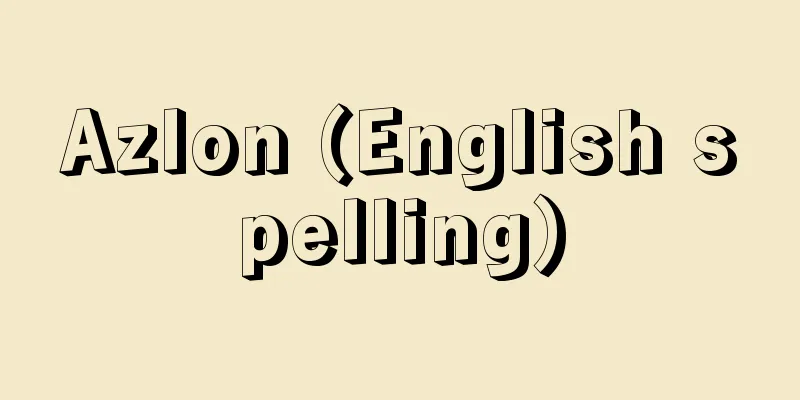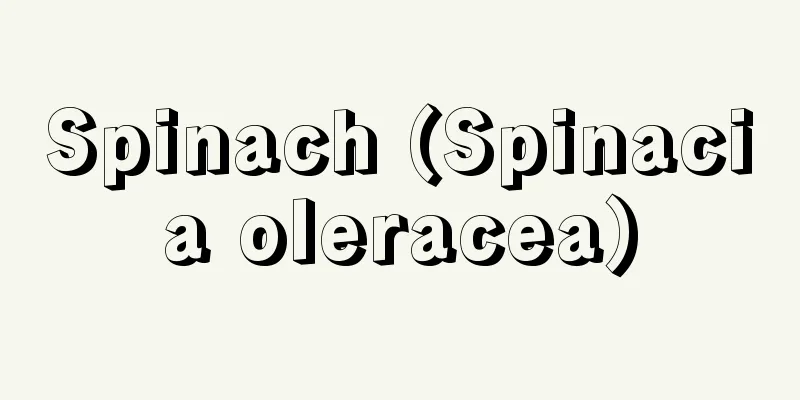Eichendorff - Joseph von Eichendorff

|
A German poet of late romanticism. Born into an old noble family in Upper Silesia. He was strongly influenced by many romantics such as A. v. Arnim, C. Brentano, and F. Schlegel in Heidelberg, Berlin, and Vienna. However, the pathological personality of excessive egoism, which is common among romantics, is hardly seen in his real life or works. While he led an honest life as a Prussian civil servant for 28 years from 1816, he was a poet who had a strong sense of self-restraint in both life and literature, and was praised by people as "the last knight of romanticism." His lyric poems, which sing of natural experiences internalized in quiet Catholic religious feelings using simple and familiar images, are simple and close to folk songs, and are characterized by excellent musicality. His works are also widely loved through compositions by Schumann, Wolf, and others. However, it is his novella From the Life of a Boredom (1826) that has made him famous and is loved by people of all walks of life. The young protagonist, who wanders freely, swayed by longing and nostalgia for a distant world, is a typical example of a romantic way of life. He also wrote several prose works, including the novel Premonitions and Presents (1815) and the short story The Marble Statue (1819). He also wrote plays and translated the works of the 17th century Spanish playwright Calderon. In the last ten years of his life, he also wrote unique literary history, drama theory, and novel theory based on his religious literary perspective, revealing a new side of Eichendorff the lyric poet. [Kubota Isao] "The Slacker," translated by Kawamura Jiro (included in "Chikuma World Literature Series 77: German Romanticism," 1963, Chikuma Shobo)" ▽ "The Wanderings of Friedrich," by Eichendorff, translated by Kamishina Yoshio et al. (1970, Shueisha)" ▽ "Premonition and the Present: The Life of the Poet Eichendorff," by Ishimaru Shizuo (1973, Ikubundo)" Source: Shogakukan Encyclopedia Nipponica About Encyclopedia Nipponica Information | Legend |
|
ドイツ後期ロマン主義の詩人。上部シュレジアの古い貴族家系に生まれる。ハイデルベルク、ベルリン、ウィーンなどで、A・v・アルニム、C・ブレンターノ、F・シュレーゲルら多くのロマン派の人々と交わり、強い影響を受けた。しかし、ロマン主義者にありがちな過剰な自我意識におぼれる病的な性格は、彼の実生活にも作品にもほとんどみられない。1816年から28年間に及ぶプロイセン官吏としての実直な生活を営む一方、人々からは「ロマン主義の最後の騎士」と賞賛されたように、生活、文学両面において、志操堅固な自己抑制を心得た詩人であった。静かなカトリック的宗教感情のうちに内化させた自然体験を、簡潔でなじみやすい形象を使って歌う彼の叙情詩は、素朴で民謡に近く、また優れた音楽性が特徴である。シューマン、ウォルフらの作曲によっても広く親しまれている。しかし、彼の名を広め国民各層にもっとも愛読されているのは、中編『のらくら者の生活から』(1826)である。遠い世界へのあこがれと郷愁に揺られながら、気ままにさすらう若い主人公は、ロマンチックな生き方の一典型を示す。ほかに小説『予感と現在』(1815)や短編『大理石像』(1819)など散文数編がある。また、戯曲や17世紀スペインの劇作家カルデロンの翻訳、さらに宗教的文学観から晩年10年間には特異な文学史や戯曲論、小説論などをも手がけ、叙情詩人アイヒェンドルフの新たな一面をのぞかせている。 [久保田功] 『川村二郎訳『のらくら者』(『筑摩世界文学大系77 ドイツ・ロマン派集』1963・筑摩書房・所収)』▽『アイヒェンドルフ著、神品芳夫他訳『フリードリヒの遍歴』(1970・集英社)』▽『石丸静雄著『予感と現在 詩人アイヒェンドルフの生涯』(1973・郁文堂)』 出典 小学館 日本大百科全書(ニッポニカ)日本大百科全書(ニッポニカ)について 情報 | 凡例 |
Recommend
Trichocoma paradoxa Jungh.
A mushroom of the Aspergillus family of irregular ...
pū'ili (English spelling) puili
...The basic instruments that accompany the hula ...
Umabil - Umabil
It belongs to the phylum Annelida, class Hirudina...
Steinitz, W.
...Others have pointed out its connection with th...
Tricyrtis nana (English spelling)
…[Hiroshi Takahashi]. … *Some of the terminology ...
House mouse lice - House mouse lice
...Hoplopleuridae is the largest family and its m...
Jacob
A figure in the Old Testament. Also called Israel,...
Ashikaga Shikibu Dayu
…In 50 (Kyuan 6), he clashed with the right gener...
Hornbostel - Erich Moritz von Hornbostel
1877‐1935 Austrian musicologist. Raised in a music...
Preservation lawsuit - Hozensosho
A general term for provisional attachment and prov...
Macropus antilopinus (English spelling) Macropusantilopinus
...Their bodies are sturdier than those of wallab...
Lamaze, F. (English spelling) LamazeF
… [Psychoprophylactic painless childbirth] This m...
Bleek, WHI (English spelling) BleekWHI
...The other vocabularies in this lineage were De...
green
…Words such as green grass, green leaves, green v...
Town mirror - Machikagami
A guide to the names of towns and cities in early ...









